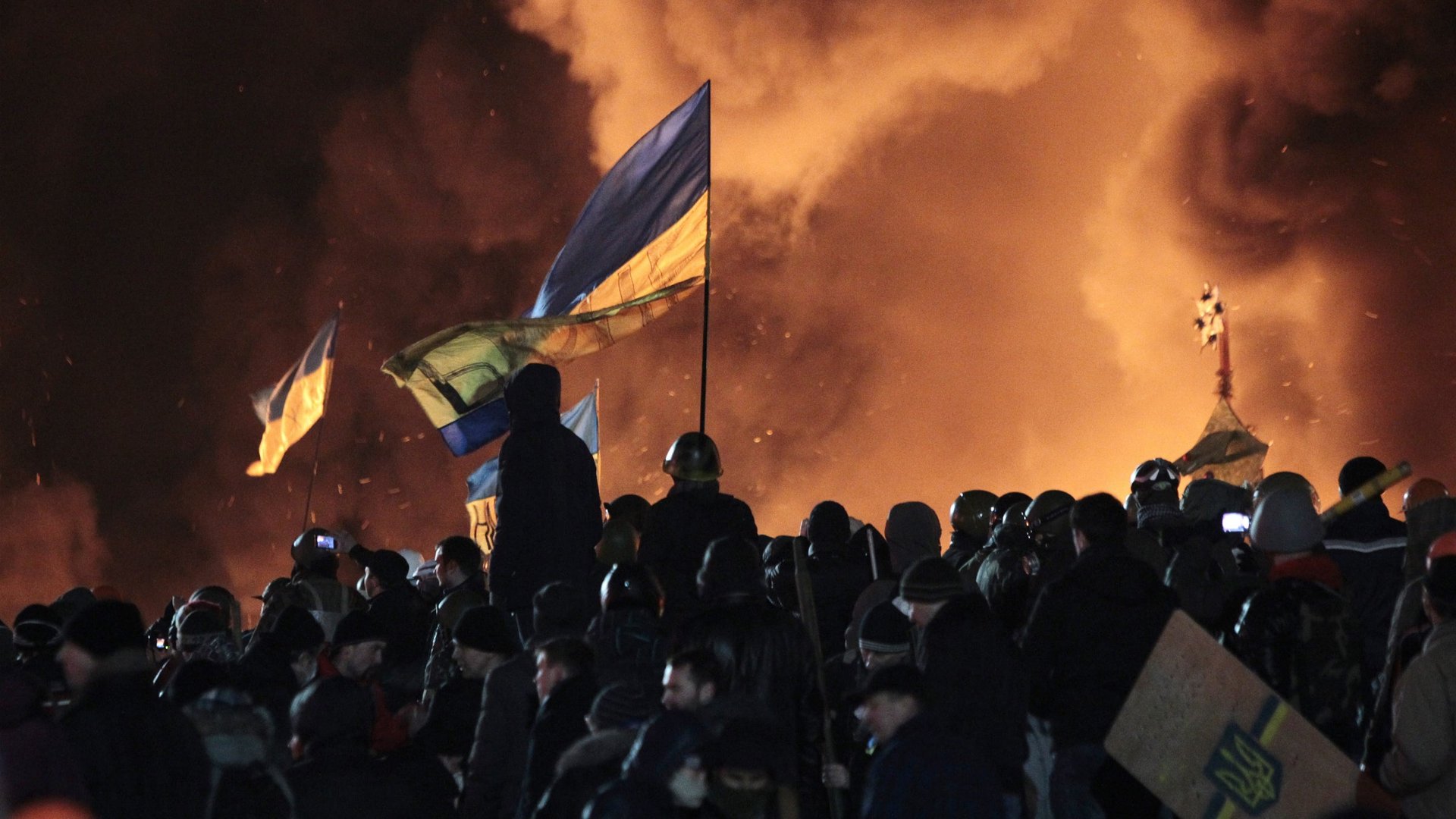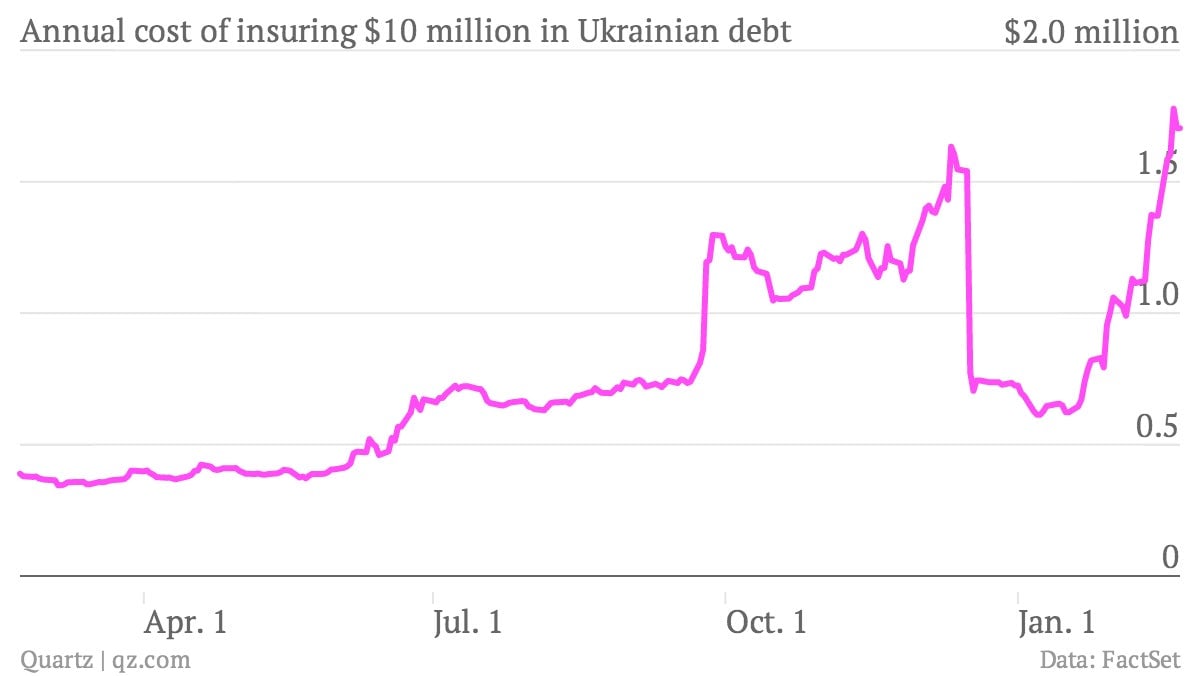Ukrainian bonds were cheap for a reason, some investors are now finding out
It seemed like a good idea at the time. At the end of last year, some well-known emerging market investors made big bets on a Russian bailout for Ukraine.


It seemed like a good idea at the time. At the end of last year, some well-known emerging market investors made big bets on a Russian bailout for Ukraine.
And over the last few days they’ve been paying for it.
Back in December, snapping up low-priced Ukrainian debt looked pretty reasonable. Russia had moved to support Ukraine—which is struggling with falling international reserves and a yawning current account deficit—by striking a deal to buy billions in government bonds and cut the price of Russian natural gas. Market metrics showed people thought the bonds had gotten much safer. The price to insure Ukrainian government bonds against default—which you can do in the market for credit default swaps—plunged.

But as you can see from the chart above, that didn’t last long. Over the last few weeks, the street-fighting in Kiev between anti-government protesters and the police pummeled prices for Ukrainian government debt once again.
Franklin Templeton’s star emerging market bond fund manager Michael Hasenstab held roughly $3.8 billion in Ukrainian debt at the end December, The Financial Times reports. (Hasenstab’s best-known fund, the Franklin Templeton Global Bond Fund, held about $690 million in Ukrainian bonds.) The FT added that EM investor Hans Humes says he doubled his position in Ukrainian debt this week.
Gutsy call. Or perhaps just a bad one.
Analysts at the credit-rating firm Standard & Poor’s accompanied their downgrade of Ukraine’s economy today with some words of caution: With continued Russian support “uncertain,” they said, “it is likely that Ukraine will default in the absence of significantly favorable changes in circumstances, which we do not anticipate.”